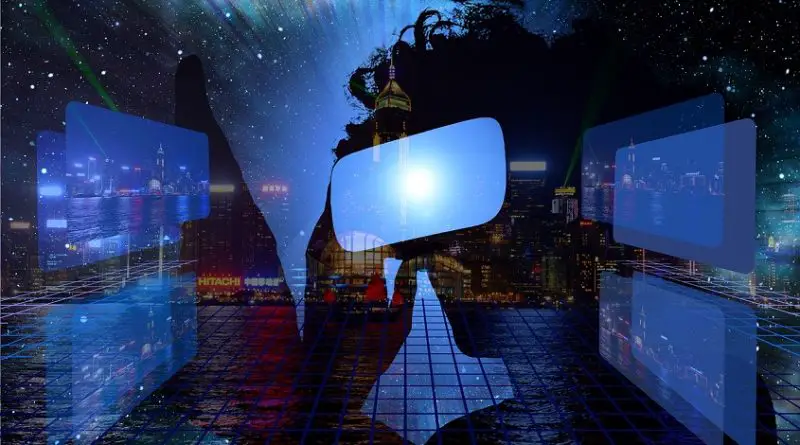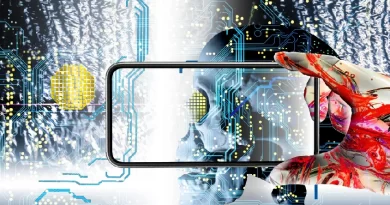AI-Powered Metaverse Creation: The Future of Virtual Worlds
The future of virtual worlds will be powered by AI, allowing for the creation of dynamic and immersive metaverses where users can interact and explore in new ways. This will revolutionize the way we experience and interact with virtual spaces.
The future of virtual worlds is looking more and more promising as advances in AI technology such as ChatGPT and DALL-E are allowing for the creation of detail-rich and customizable metaverses. These advances in AI are making it possible to create virtual worlds that are not only visually stunning, but also highly interactive and responsive to user input. This is leading to the creation of truly immersive virtual experiences that are unlike anything we’ve seen before.
According to an article in TIME’s newsletter Into the Metaverse, recent developments in AI text-to-3D generators such as GET3D from Nvidia, Make-a-Video from Meta, and DreamFusion from Google are opening up new possibilities for creating immersive virtual worlds. These text-to-3D generators use natural language processing and machine learning algorithms to convert written descriptions of objects and environments into fully rendered 3D models. This allows creators to quickly and easily generate detailed virtual worlds without the need for extensive manual modeling and animation.
One of the key advantages of these AI-powered text-to-3D generators is that they allow for a high degree of customization and flexibility. For example, users can input descriptions of specific objects or environments and the AI will generate a 3D model based on that description. This allows creators to easily create unique and personalized virtual worlds that are tailored to their specific needs and preferences. Additionally, these AI-powered tools can also be used to generate virtual environments that are responsive to user input, such as changing lighting and weather conditions.
Metaverse builders are already utilizing these AI technologies to ideate new worlds and designs. For example, ChatGPT is being used to brainstorm ideas, write code, and compose texts and emails, while DALL-E is being used to create images out of text prompts. According to industry insiders, these AI technologies will be crucial in building virtual worlds that regular people will want to spend time in.
One metaverse builder, Sean Ellul, the co-founder of the 3D development studio Metaverse Architects, has already integrated ChatGPT into his daily workflow. He uses it to tweak design ideas, solicit marketing techniques, and create architectural blueprints. When asked how often he uses ChatGPT, Ellul responded, “How many times a day do you search something on Google?”, highlighting just how integrated the technology has become in his work process.
The use of ChatGPT in the metaverse building industry is not limited to just Ellul. As the technology becomes more widely adopted, it will likely become a staple tool for developers and builders to create and design virtual worlds. ChatGPT can assist in generating ideas, fine-tuning details, and even creating entire virtual environments. Its ability to understand and respond to natural language input makes it a valuable asset in the design process.
Additionally, the integration of AI technology in virtual worlds also opens up new possibilities for personalization and customization. With ChatGPT, users will be able to create virtual environments tailored to their specific needs and preferences. This level of customization will make virtual worlds more appealing to a wider range of users, from gamers to business professionals. As the technology continues to evolve and improve, the future of virtual worlds looks bright and full of possibilities.
One of the key ways that AI is contributing to the development of metaverses is through the use of AI services. These services can use prompts to build virtual environments much faster than a human can do by hand, making it possible for users without a background in design or architecture to create virtual 3D environments. This is a significant shift in the industry, as it allows anyone to create their own virtual world, regardless of their technical skills.
Additionally, AI characters will be able to respond to users organically, just like real people. This will create more immersive and believable virtual worlds, as the characters will be able to interact with users in natural and realistic ways. This is a huge step forward for the metaverse industry, as it will allow users to experience virtual worlds that feel just like the real world. This will be a great boon for the gaming and entertainment industries, as it will enable the creation of more realistic and engaging virtual experiences.
It is not only the gaming and entertainment industries that will benefit from the advancements in AI technology. The business world will also see the benefits of AI in metaverse creation. For example, companies will be able to use metaverses to create virtual showrooms, conference rooms, and other spaces that will enable them to connect with their customers in new and exciting ways. This will enable businesses to reach new audiences and create new revenue streams.
The advancements in AI technology are bringing us closer to a future in which users can create their own strange and immersive virtual worlds. As Rev Lebaredian, VP for Omniverse and simulation technology at chipmaker Nvidia, said, “If we are going to create a 3-D internet, then you absolutely have to have the people who are participating in it creating content as well—and the only hope we have of making that happen is if AI can help us.”
Reference:
A version of this article was published in TIME’s newsletter Into the Metaverse. Subscribe for a weekly guide to the future of the Internet.




